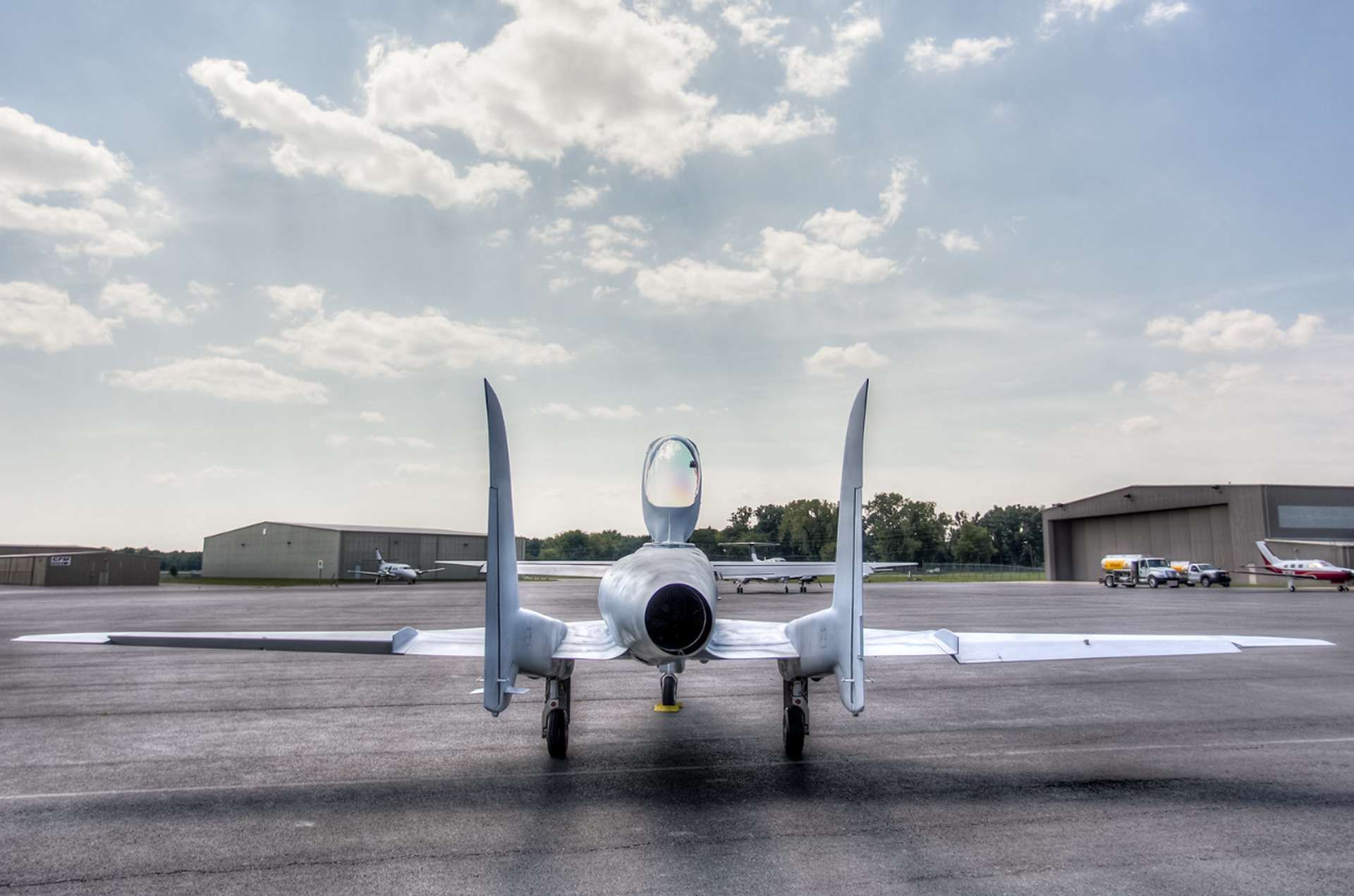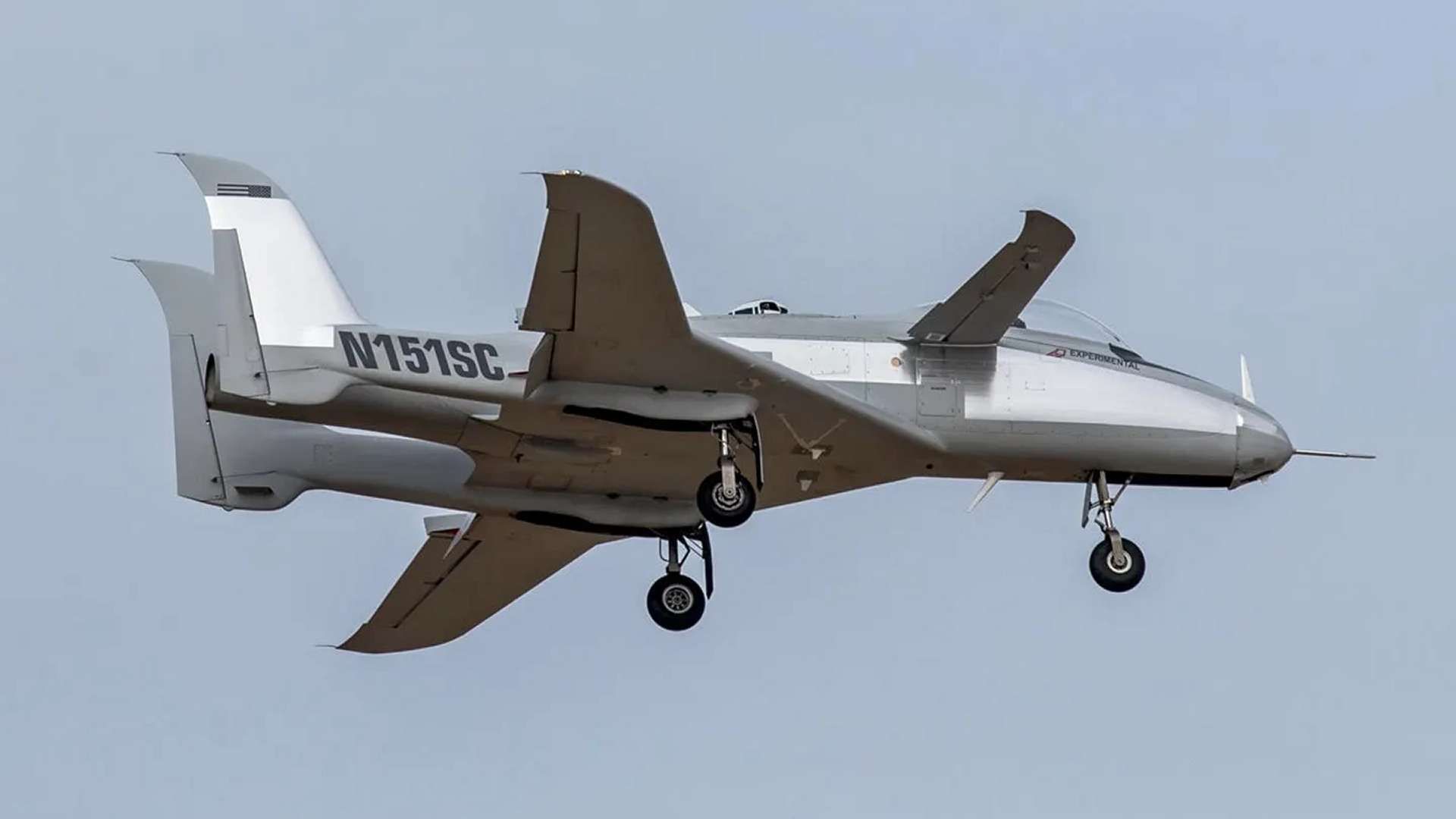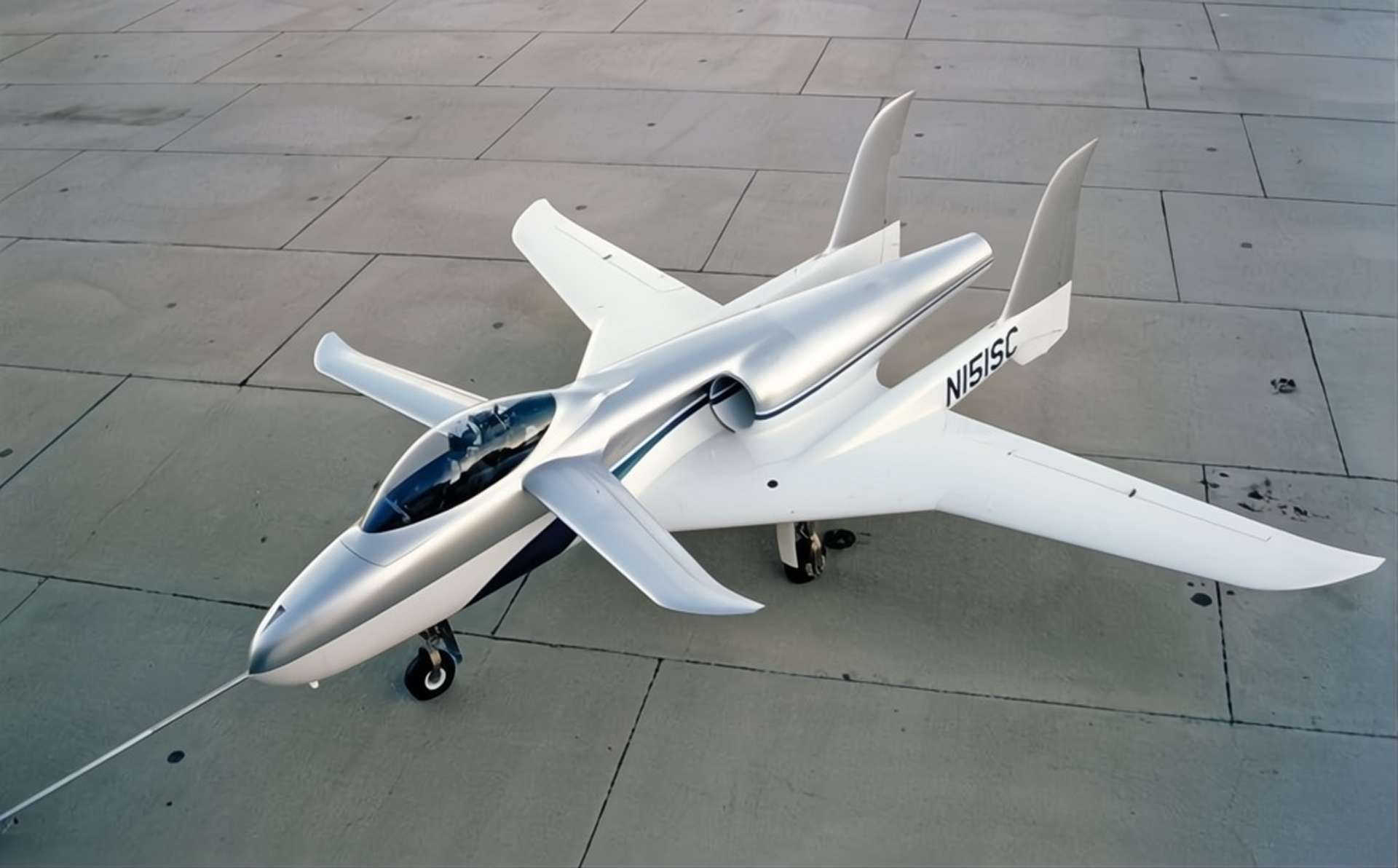Breaking News
US Army's 34-year-old unique ARES close air support aircraft still active for classified tests.
On October 6, 2024, TaskForce23 observed a new flight of the unique Scaled Composites ARES (Agile Responsive Effective Support) aircraft near the Mojave Air and Space Port. This Close Air Support (CAS) concept demonstrator continues to serve as a research test bed for the US Army. Remarkably, it has done so for 34 years since its initial flight on February 19, 1990. The ARES maintains several features from its original design, including metallic leading edges, fairings, and a distinct patch of coating on the right tail.
Follow Army Recognition on Google News at this link

34 years since its initial flight, the mysterious ARES maintains several features from its original design, including metallic leading edges, fairings, and a distinct patch of coating on the right tail. (Picture source: TaskForce23)
The ARES (Agile Responsive Effective Support) was developed in response to a US Army request in the early 1980s for a Low Cost Battlefield Attack Aircraft (LCBAA), designed to fulfill roles requiring low-altitude, anti-tank battlefield support with long endurance and the ability to operate outside improved airfield environments. US Army aviators Jim Kreutz and Milo Burroughs initiated a study in 1981 to develop an aircraft with high maneuverability at low altitudes and stall resistance. Burt Rutan's Scaled Composites joined this effort, resulting in the development of the ARES under Model No. 151.
The aircraft has a canard configuration, with a foreplane that provides pitch control. This foreplane is designed to stall before the main wings, enhancing safety during low-altitude operations. Although initially planned for a turboprop engine, the design was updated to use a Pratt & Whitney Canada JT15D-5 turbofan engine, producing 13.12 kN of thrust. This change addressed potential issues with debris ingestion during takeoffs and landings on unimproved surfaces.
One notable feature of the ARES is its asymmetrical design. It mounts a GAU-12/U Equalizer 25 mm rotary cannon on the right side of the nose, with the engine intake located on the left. This layout minimizes the impact of the cannon's recoil on performance and prevents exhaust gases from entering the engine intake. The cannon is positioned in a concave recess beneath the cockpit to trap exhaust gases and balance recoil forces during firing.

One notable feature of the ARES is its asymmetrical design, as this aircraft mounts a GAU-12/U Equalizer 25 mm rotary cannon on the right side of the nose, with the engine intake located on the left. (Picture source: Flickr/Corporate Flight Management)
First flown on February 19, 1990, by Scaled Composites test pilot Doug Shane, the ARES has completed over 430 flight hours with the tail number/aircraft registration number N151SC. In November 1991, the ARES tested the GAU-12 Equalizer five-barrel 25 mm Gatling-type rotary cannon under a US Air Force contract, validating its Close Air Support (CAS) capabilities. This testing led to the cannon’s integration into various aircraft, such as the AC-130U Spooky gunship, the AV-8 Harrier II ground attack aircraft, and the AH-1 Cobra attack helicopter.
Despite its successful demonstrations, the ARES remained a private project as the military did not adopt it for operational use. However, it continues to function as a research test bed. After being stored in December 2000 at the Mojave Spaceport, the aircraft returned to flight on March 7, 2008, following Scaled Composites' acquisition by Northrop Grumman. The ARES remains active as a research test bed, providing services in conceptual design, aerodynamic analysis, structural design, systems integration, and experimental flight testing.
In 2020, the ARES was observed flying alongside its successors, the Model 401 "Son of Ares" jets, over the Mojave Desert, showcasing a reflective metallic-like surface coating. This aligns with previous tests involving reflective coatings, possibly related to research on aircraft signatures against sensor systems such as infrared search and track technologies. The Proteus testbed platform by Scaled Composites has also conducted similar flights, equipped with large pods believed to house electro-optical systems.

In 2020, the ARES was observed flying alongside its successors, the Model 401 "Son of Ares" jets, over the Mojave Desert, showcasing a reflective metallic-like surface coating. (Picture source: The War Zone)
Defense-related flight testing in the southwest U.S. desert has increased, with Scaled Composites' testbed jets actively participating. Observations of aircraft, such as F-15s equipped with infrared spectrum data-collection test pods, suggest research into infrared search and track systems or low-power laser technologies. Additionally, the ARES has also played the role of a fictional German jet, the ME-263, in the film "Aces: Iron Eagle III" released in 1992.
Specifications for the ARES include a length of 8.97 meters, a wingspan of 10.67 meters, and a height of 2.99 meters. Its wing area is 17.5 square meters, with an empty weight of 1,308 kilograms and a maximum takeoff weight of 2,767 kilograms. Equipped with a single Pratt & Whitney JT15D turbofan engine, the ARES reaches a maximum speed of 750 kilometers per hour at 7,620 meters and has a service ceiling of 10,668 meters. Its combat range is 1,110 kilometers, with a thrust-to-weight ratio of 0.43 at maximum weight.
The ARES is capable of carrying a 25 mm GAU-12/U Gatling cannon and has provisions for air-to-air missiles such as the AIM-9 Sidewinder or AIM-92 Stinger, as well as unguided rockets and other air-to-ground weapons. Its design emphasizes low-altitude performance and the ability to operate from unimproved airfields, meeting the goals of the original LCBAA program.
The aircraft features twin boom-mounted vertical fins for directional stability and uses a canard for pitch control. The structure is composed primarily of fiberglass composite over a foam core, a fabrication technique developed by Scaled Composites. The flight controls are mechanical, and the engine includes a backup mechanical fuel control to maintain control in the event of electrical system failure.

Equipped with a single Pratt & Whitney JT15D turbofan engine, the ARES reaches a maximum speed of 750 kilometers per hour at 7,620 meters and has a service ceiling of 10,668 meters. (Picture source: Secret Projects)


























